Oyster is healthy seafood and a source of Zinc.Nutrients, benefits, information, history and recipe!
Oyster is such a unique seafood and can make any day into a day of celebration! Caviar, lobster and goose liver are considered as luxury food, but the height of luxury is still oysters! This is food that does not leave anyone indifferent, some describe oyster poetically as a wet kiss from the sea, while others believe that oyster more can be described as an involuntary gulp of cold water!
Anyway, if you like or dislike, you can find useful information about oysters in this hub !
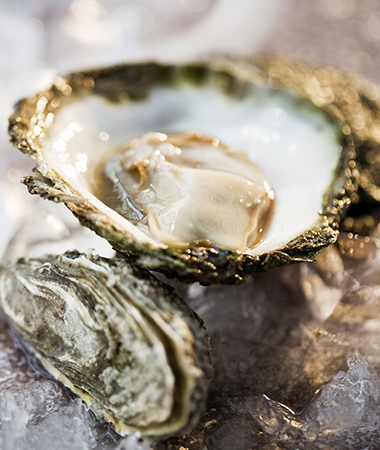

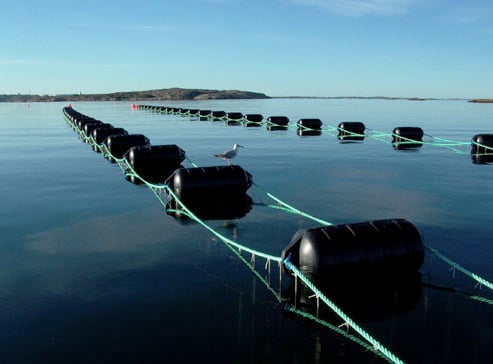
Some who really love oyster believe that oysters have an intensity of flavour that is more like fruit and nuts than the animal flavour. And they also firmly spoke for that oyster should be chewed on, in order to feel the real flavour, salty and wet as a kiss!
And then there are those who become a little crazy and almost obsessed by the thought of oyster! They really connect oyster to glamour, luxury, real special occasions, preferably with good friends in a luxury environment.
Oysters have historic roots, already Neolithic man eat oysters on the Swedish west coast. Archaeologists have found lots of oyster shells buried in the kitchen waste from both the Neolithic and Bronze Age. Oysters are also said to have been popular among the Vikings and even famous personalities like Napoleon and Casanova is said to have been big consumers of oysters. Obsession with oysters also existed for 2 500 years ago when the Romans sent thousands of slaves to pick oysters at the English Channel.
There is hardly a more environmentally friendly fishing than oyster fishery. Current methods to fish oyster is to dive and pick oysters by hand or rake them up from a boat or pier. Oyster lives natural or is cultivated. When cultivated they grow on a pole, a raft, a rope or in a pool.
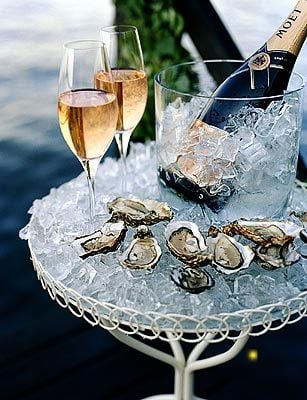
So, is oyster an aphrodisiac?
The common picture most of us have when oyster is used in romantic dinners is oysters served only with a few drops of lemon and a glass of champagne. Oysters it also considered as an strong aphrodisiac! And perhaps they can contribute to a sensual mood, but personally I think that the champagne will do more for sensuality. But as you can see further down in this article, oyster contains high amount of zinc, which plays an important role in reproduction in both men and women, and especially for sperm production. Maybe that has something to do with that oysters are considered as aphrodisiac!
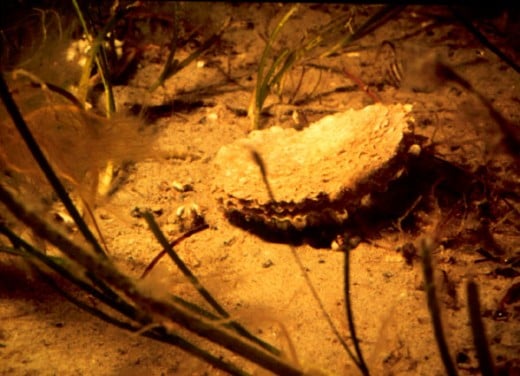
Background
Oyster (Ostreidae) is the name of different type of mollusc's that lives on sandy and rocky bottoms in shallow, salty and quite warm water. There are 50 known species of oysters in the world but the three most famous are the Crassostrea gigas (also called Japanese Oyster) Crassostrea virginica (Atlantic oysters that occurs along the U.S.east coast) and Ostrea edulis (European, plate, oysters). The European oyster (Ostrea Edulis) occurs from the Mediterranean in the south to Norway in the north. The European oyster has asymmetrical shell. One half is convex and the other is small and flat. They live from the water level down to 20 meters deep and feed on micro-plankton. Oysters are sessile filter feeders that filter microscopic organism and organic particles. Oyster switches sex several times during lifetime. Oysters are bisexual which means the same individual can reproduce as both male and female. When an oyster becomes sexually mature, at about the age of one year, it propagates itself as male. At the age of three, they may, if the water permits, first reproduce as female and then as a male again. Then it shifts between male and female for the rest of their lives. If the water temperature is to low (<16 degree Celsius) the oysters don’t have enough time to form mature eggs fast enough, and reproduction is in danger of failing. Cultured oysters may grow in water that is guaranteed above 16 degrees. They also have good access to custom feed.
Oyster thrives at the coasts, at river mouths and at places where freshwater meets saltwater.
Benefits of oyster
By eating seafood you get many necessary and healthy minerals and vitamins!
Zinc
Oyster gives you the daily requirement of zinc which plays an important role in reproduction in both men and women, and especially for sperm production. Zinc is also important for wound healing.
Besides zinc, oyster will give you:
Selenium
Selenium is a powerful antioxidant and strengthens the immune system and protects the body against heavy metals, free radicals and aging. Selenium is needed in particular for the cells oxygen supply, good for hair and nails, metabolism and immune system.
High in protein and energy, low amount of fat and carbohydrates
As all seafood, Oyster contains large amounts of cimportant nutrients that are hard to find elsewhere. But oysters are also high in protein which means that we feel satisfied with a minor amount of food. Oyster has extremely low fat content which make oyster a healthy food!
Vitamin D
Vitamin D is vital for our body and this is some of the benefits we get from Vitamin D: good for bone formation, for the nervous system, and it is good for skin and hair and are also necessary for the entry of calcium and phosphorus in the intestine. Vitamin D improves absorption of minerals, is good for the immune system, prevent flu and depression. Good against muscles weakness and combats inflammation.
Niacin, or vitamin B3
Niacin is helping to transform fat and build chemical compounds.
Vitamin B12
Vitamin B 12 is essential for the body´s nerves and cells by cell division and cell metabolism, production of DNA and nervous system.
Phosphorus
Phosphorus is a mineral that is good for DNA and genome, nutrient metabolism of fat and carbohydrate and for production of energy.
Iodine
We need iodine in metabolism and potential shortage may cause metabolic disorders, goitre or hypothyroidism.
How to open an oyster in 30 seconds!
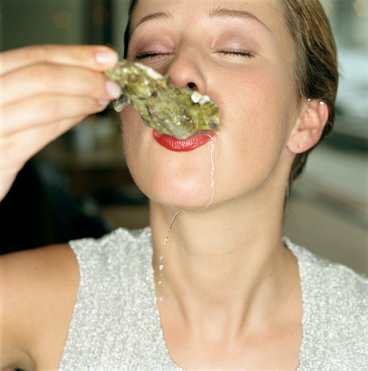
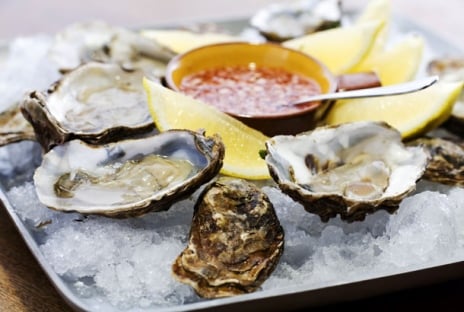
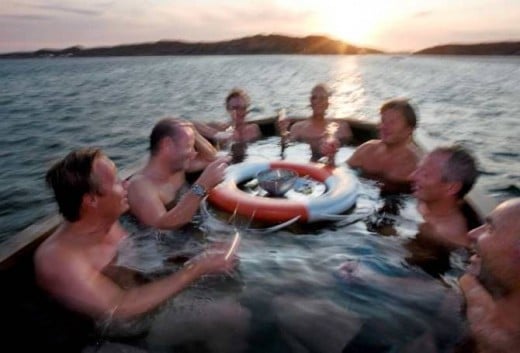
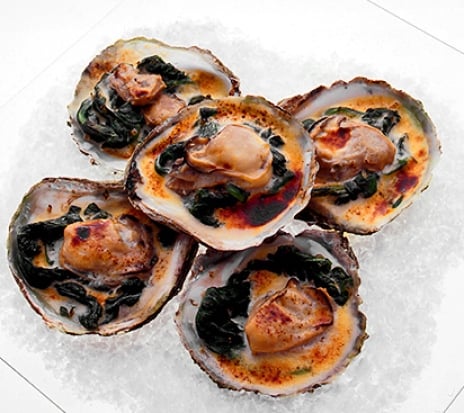
Recipes
Oysters natural!
The best way to eat oyster, is according to the connoisseurs is to eat oysters natural, possibly with a few splashes of lemon! Oysters are eaten raw ore alive. Serve with champagne!
You can also spice up oysters with a Tabasco or a dash of vinaigrette. Raw oysters can also be spiced up with a little bit stronger spices like fresh chilly, this is perhaps especially for those who are a little bit skeptical about oysters.
Oysters have hard shell and must be open with a sharp knife. It can be done with a special oyster knife or, if you don't eat oysters that often, an ordinary table knife usually works. You hold the oyster flat side up, and cajoling the knife between the shells. find the muscle that holds the oyster, it can be found on the side furthest away from the hinge, and cut it with the knife. After that it is pretty easy to pry open the oyster. It is customary to eat the whole guts.
Fresh oysters should be eaten as soon as possible, but can be refrigerated up to 2-3 days.
Baked oysters
Oysters can also be nice to cook and served as a luxurious starter or snack with a drink.
Servings:4
Ingredients:
12 oysters
2 shallots
2 tablespoons butter
150 g spinach
a little less than a 1/4 cup cream (0,5 dl)
1 teaspoon tomato paste
1 teaspoon lemon juice
1 teaspoon brandy
1 pinch hot pepper sauce
Salt and ground white pepper
Coarse salt to form
Do like this:
Preheat oven to 275 degrees. Sprinkle coarse salt on the bottom of an ovenproof dish. Open the oysters and put one shell half in the dish. Chop the onion and fry soft in butter. Shred he spinach leaves. Distribute the onion and spinach in the oyster shells. Combine the cream, tomato paste, lemon juice, brandy and Tabasco. Pour mixture over the oyster with help of a spoon. Bake for about 3 minutes. Serve!
More to read!
- Lobster is healthy seafood and a source of iodine, b...
Lobster is a classic delicacy and to eat lobster is regarded as something special in Europe! But did you know that lobster also contain many benificial nutrients, speeds up your metabolism and contain low amount of fat... - Crayfish party- a fun and tasty Swedish tradition!
Crayfish party is a Swedish tradition that most Swedish people look forward too. It takes place in late summer, autumn, and the main course is of course crayfish, sea crayfish or freshwater crayfish. Which one...








